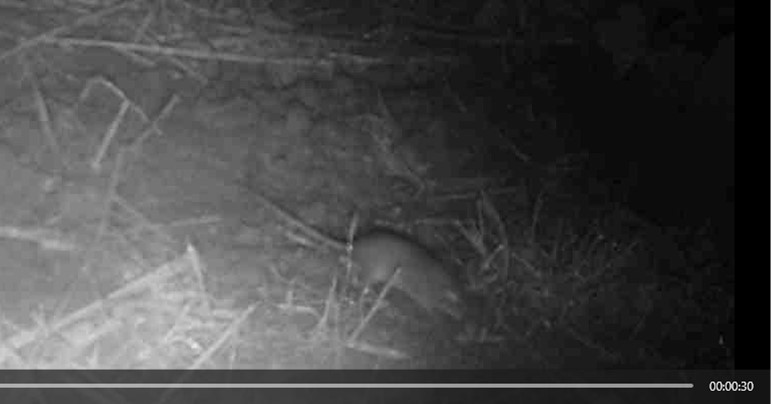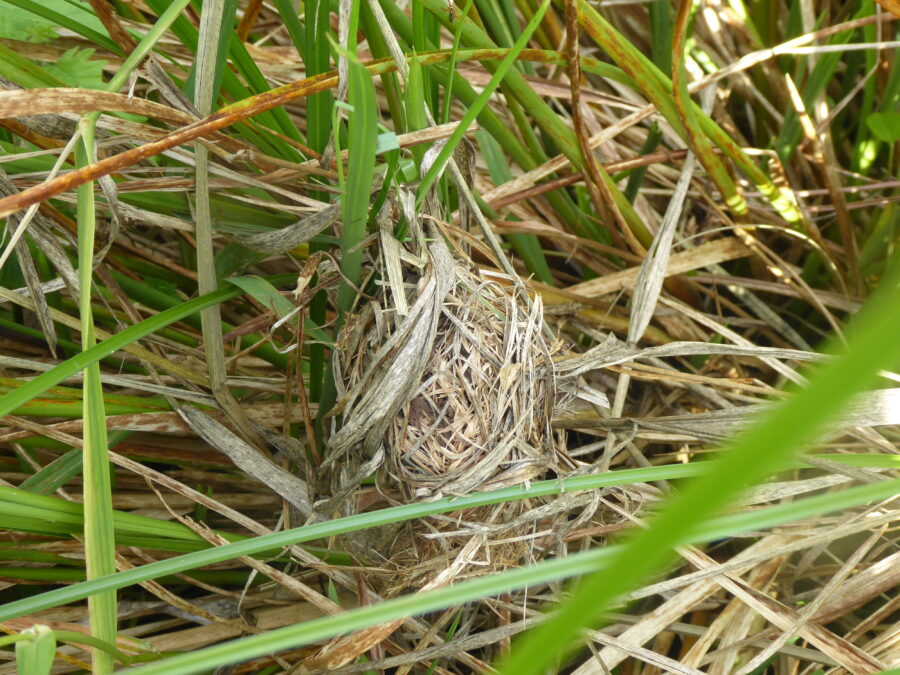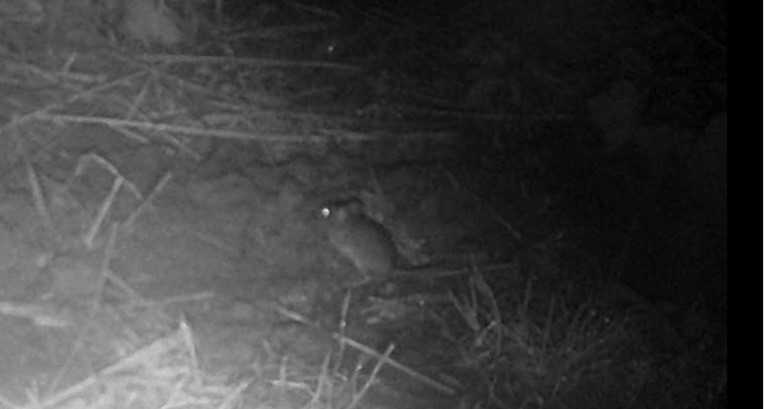It’s difficult to get around the whole of the watermeadow at the moment as most of the paths are under water. We are expecting Storm Ciaran tonight and the stream has already breached its banks on both sides. The alder saplings on the far side are still above water, but the stream is only inches away from them. On the near side, the path in Alder Corner is above water, but the left-hand side of the watermeadow (Weasel Walk) and the middle is mostly under water, and the pond is overflowing. Even the paths that look dry are really soggy, so I am walking down the drainage gully, which Mr C has cleared back to its original shingle, because I really want to protect the turf paths.
So, preparing for the storm, I brought in the Trail Cam and found five video clips. Four were of mice and one was of something large, which brushed past the camera. I think it was the badger, but there wasn’t much to go on, just a furry edge moving past!
The pictures aren’t very good quality, but this one I thought I could identify as a Wood Mouse. The wood mouse is also known as the field mouse or long-tailed field mouse. Whereas the house mouse is grey all over, the Wood Mouse has sandy brown fur and a white to grey belly. Although the picture isn’t in colour, you can clearly see a lighter belly. Its tail is roughly the same length as its head and body, and what was a clincher for me was the back feet which are large, as they spring and leap around, which this one did. They are mainly nocturnal and live in rough grasslands and gardens as well as woodland. They live in underground burrows and at this time of year they are gathering and storing food. Their diet is varied: seeds, snails, insects, fruit, berries, nuts, and fungi.


This means that we have also had Harvest Mice, as I found this nest in the summer, wrapped around a grass stalk. I wasn’t sure whether it was a mouse nest, but I’ve now got round to checking it out and found out that it is a mouse’s nest.
Harvest Mice have a blunt nose, and a shorter tail, almost as long as their body. They live in spherical woven nests sited off the ground in long grasses and they live in reed beds and long tussocky grassland as well as hedgerows and the edges of woodland. They eat seeds, fruit, and insects.
